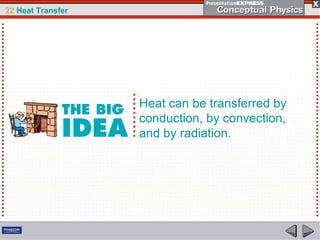Heat can be transferred through three main mechanisms: conduction, convection, and radiation.
Conduction involves the transfer of heat between objects in direct contact through collisions between particles. Convection involves the transfer of heat by the movement of heated fluids like air and water. Radiation transfers heat via electromagnetic waves and does not require direct contact between the objects.













































































































